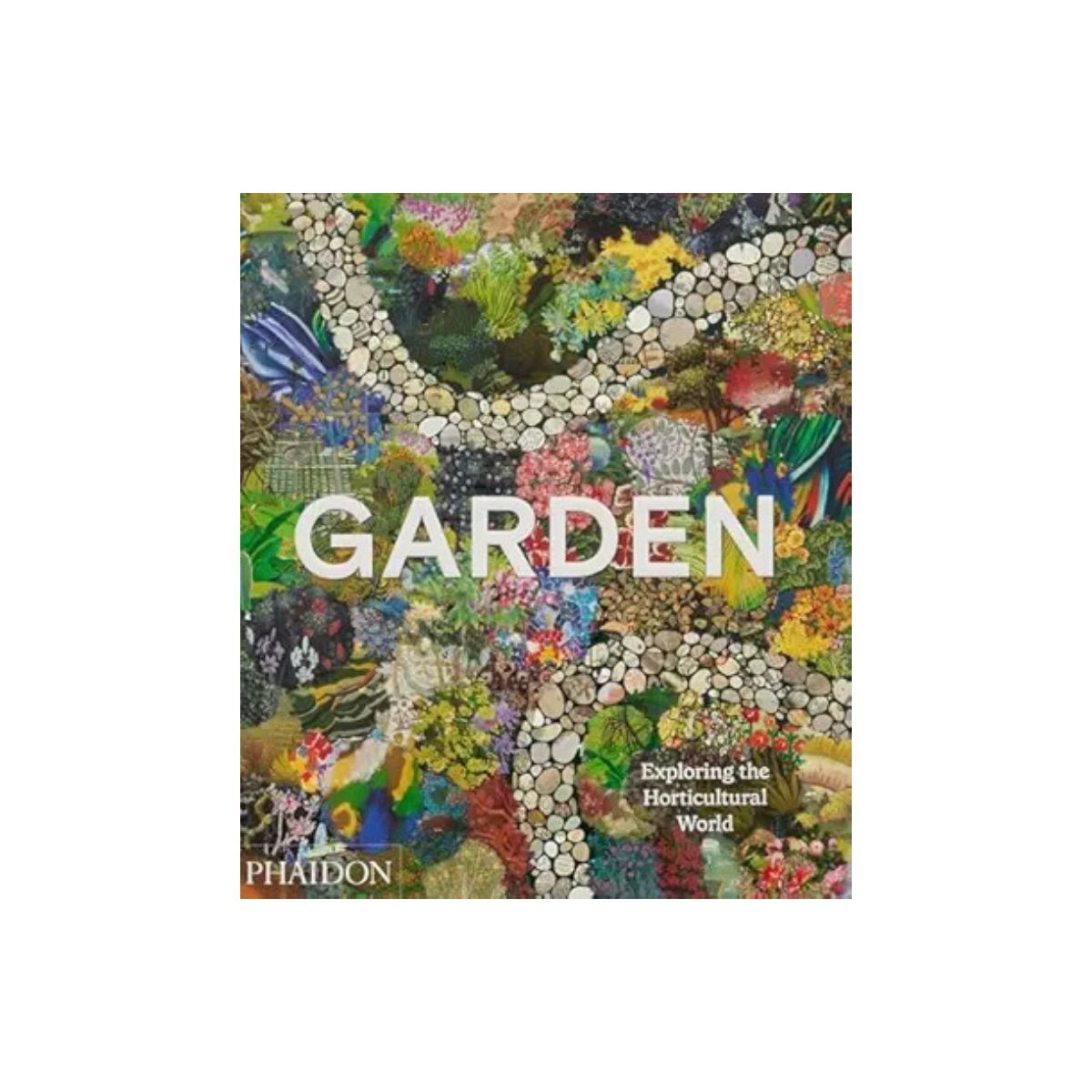A 70s garden trend is making a comeback, and this time it's not going anywhere – how to do crazy paving tastefully
Crazy paving is back, and it's got us thinking about how to implement it with a little more style
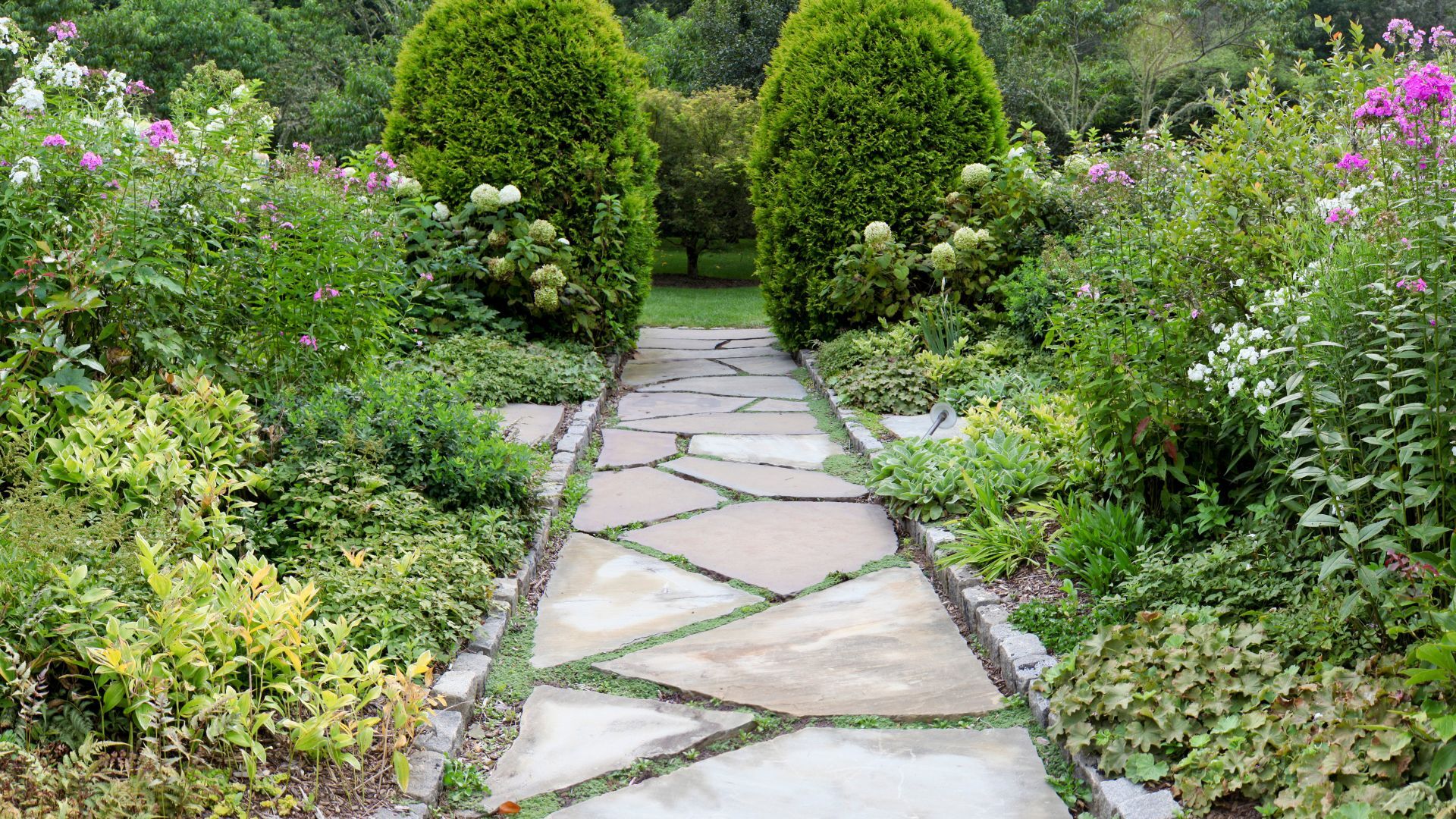
Crazy paving, once relegated to the history books of the '70s garden faux pas, is making a swift return to our gardens, and I, for one, am in favour of this long overdue renaissance.
When it comes to the unending deluge of backyard ideas to take inspiration from, there is an invaluable rule to bear in mind – it's not about how much space you have, it's about how it is defined. Pathways, routes, and tracks are crucial to making a garden beautiful.
Crazy paving was an idea put into practice by the Romans, and is essentially paving made from irregular shapes and randomized patterns. It is not necessarily easy to get right. Crucially, it relies on choosing the right materials and being able to implement the 'crazy' pattern to look stylish, sympathetic, and decidedly un-crazy. Here's everything you need to know about crazy paving and why it is becoming the latest nostalgic trend designers are reviving , and how to implement it, tastefully, in your garden.
Why crazy paving fell out of fashion

Whilst, for the most part, garden designers like me like to think of ourselves as above the comings and goings of ephemeral, fleeting, flash-in-the-pan trends that the interiors world must succumb to, it is not true to say we are totally immune to the tidal ebb and flow of garden trends.
Despite its origins in Ancient Rome, crazy paving became all the rage in the 1960s and 1970s. Much like anything that had its heyday in these decades (we're looking at you, avocado bath suits), in the decades that followed, many of the style-conscious thoroughly rejected anything that harked from these times.
Chintz was replaced with bright white everything, wallpaper replaced with gray paint, cottage garden borders replaced with minimal, low-maintenance plants, and in many ways, character was replaced with uniformity and reductionism.
Why is crazy paving it returning?
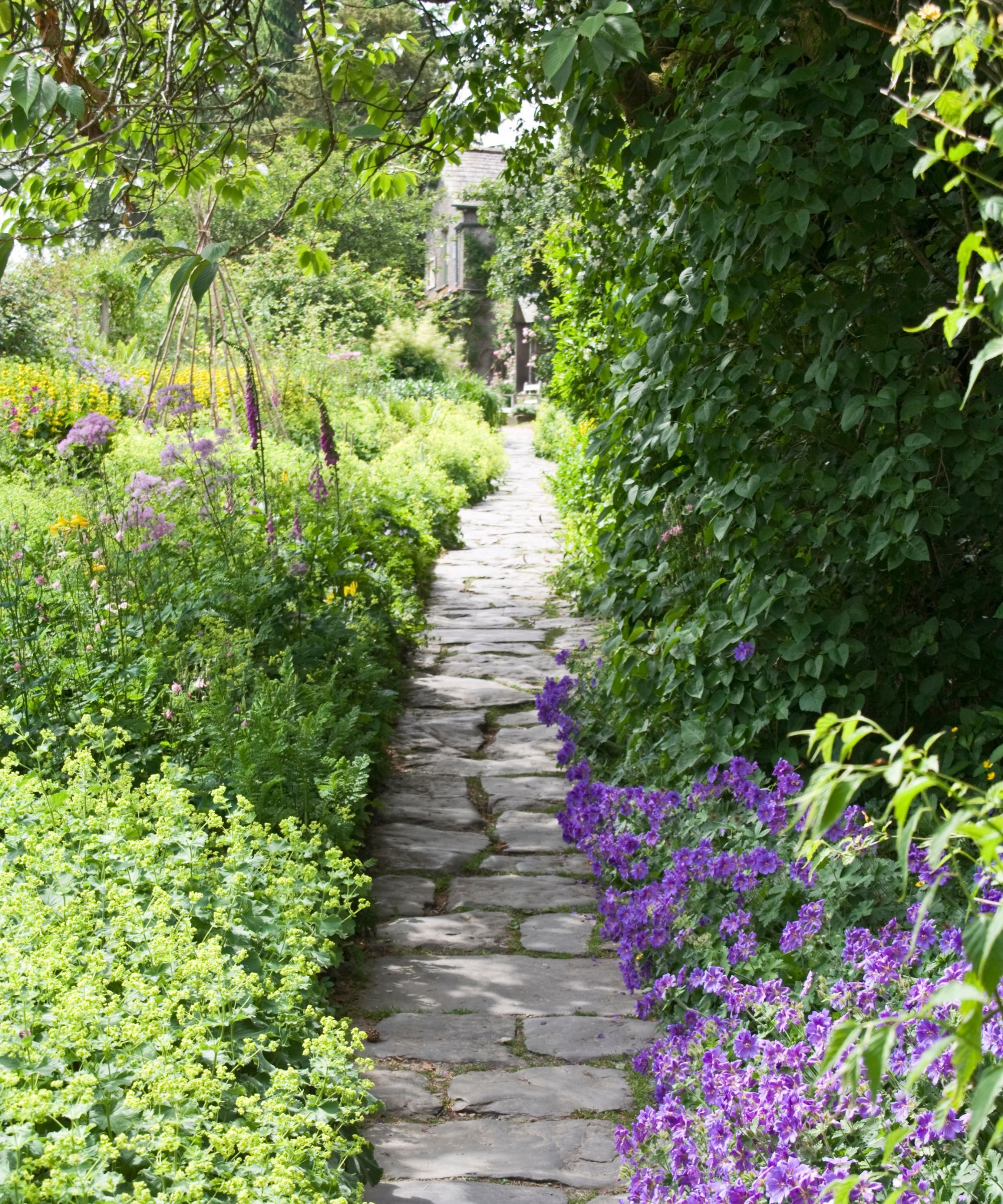
Recently, there has been a broader cultural resurgence of many of those typical '60s and '70s icons. The avocado bath suite has made its way back into our hearts, ditsy floral prints are very much back in style, and garden plants once reserved for grandma's flower bed (dahlias, dianthus, hollyhocks, foxgloves), are very much in vogue.
Design expertise in your inbox – from inspiring decorating ideas and beautiful celebrity homes to practical gardening advice and shopping round-ups.
Crazy paving is one of those garden path ideas that may have made us wince a decade ago, but now, more and more people are realising how beautiful, naturalistic, and charming it truly is.
How to implement crazy paving beautifully

The wonderful thing about crazy paving is that it allows for a bit of fun and a loosening of the rules. That said, although below I have outlined some guidelines on how to implement crazy paving tastefully, there are two major takeaways to remember.
Firstly, whatever materials are chosen must have a strongly thought-out rationale and appropriateness to the place. And secondly, think about where you are using crazy paving.
If it is underneath a seating area, be aware that tables, chairs, and benches may not sit cleanly if placed on irregular and bumpy crazy paving. It may seem obvious, but too many times I have sat half falling off a metal chair as it is hoisted up on a 'crazy' flagstone chipping on one side.
1. Use sympathetic materials
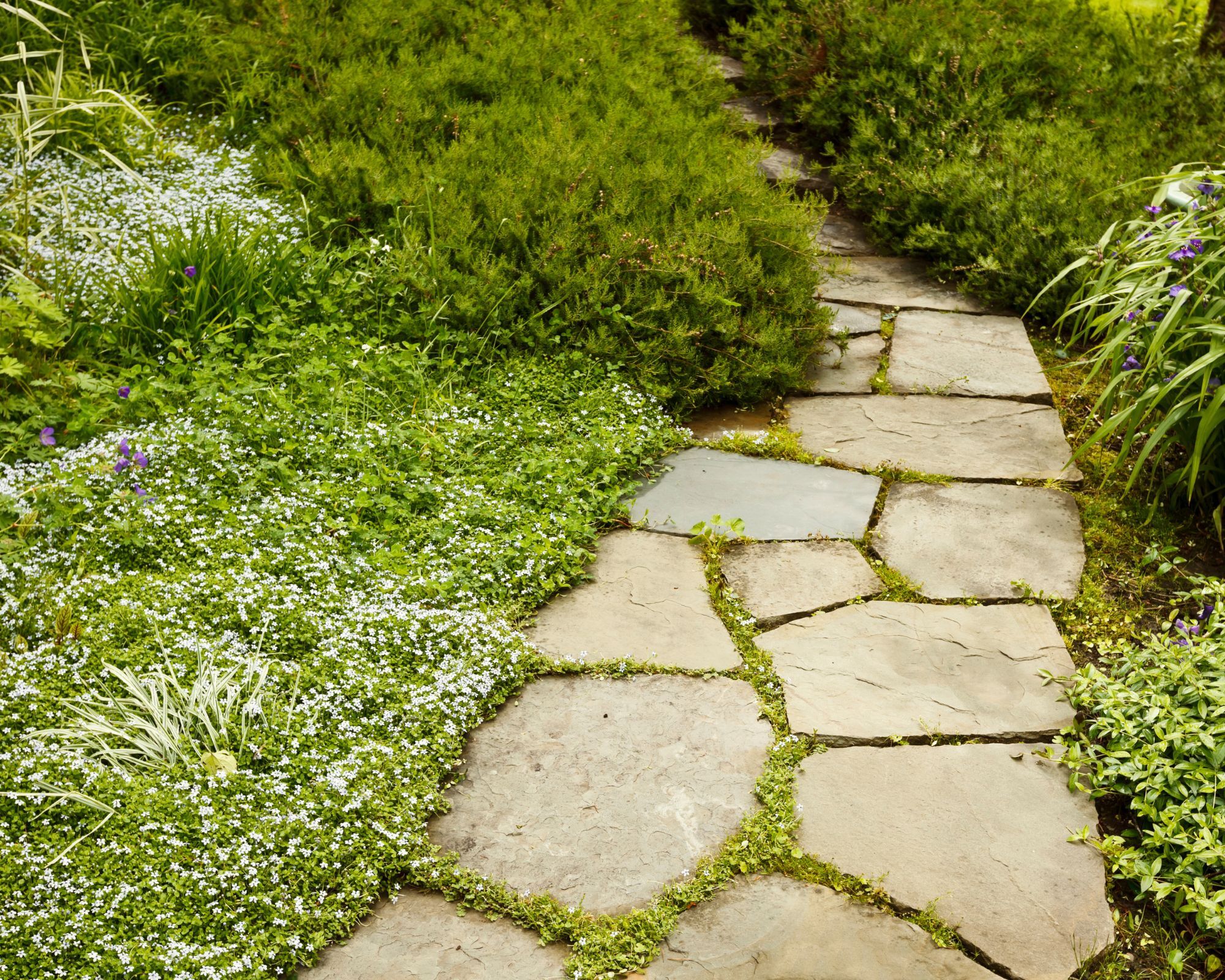
Natural materials age gracefully, adding interesting wear and patina that adds beauty to a garden. The colors in the building material of the house and surrounding buildings must be taken into account when you are selecting the type of stone you will use.
Using regionally and locally sourced materials is not only great for your sustainable garden ideas, but also will look visually cohesive and harmonized. Using stone that is not in keeping with the architecture and natural environment of your locale is a sure-fire way to fail at implementing crazy paving.
Remember, the natural colors in the stone, and the color will age to will be slightly different. You can ensure aesthetic cohesiveness with planting groundcover plants near the paving in the same color palette.
For example, if you are working with New York Blue Stone in America, you should plant with a palette of blues, such as panicum vergatum 'Heavy Metal', which will complement the metallic blue in the stone beautifully.
2. Don't be too rigid with the pattern
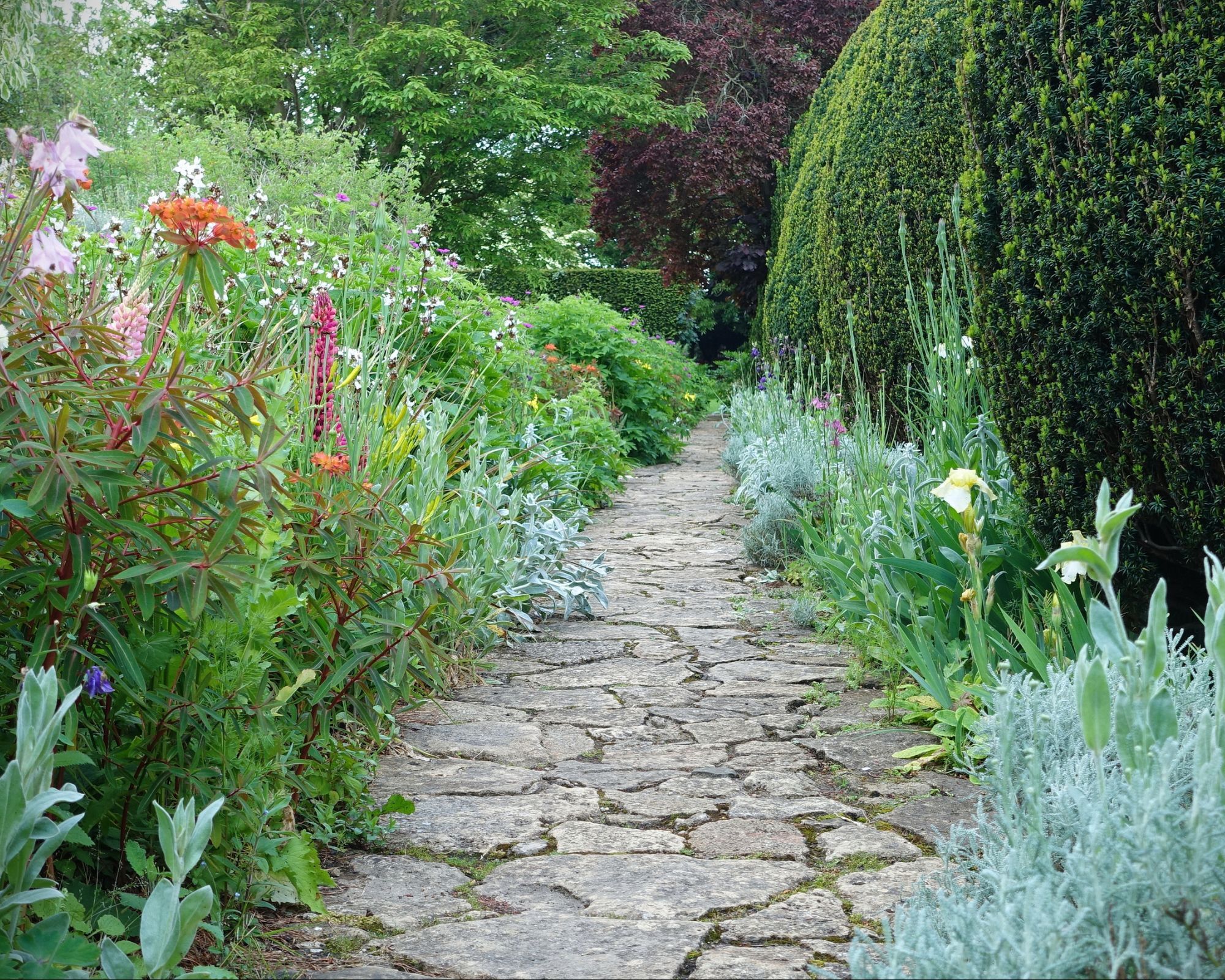
As tempting as it is to be neat and systematic about the order and design of the crazy paving, the idea is that it should look natural rather than curated, so it is best to try to refrain from being too anal about the positioning of the stone.
The more planned and strategic you are about your pattern, the more uncomfortable it will be on the eye, which seems odd, but the beauty in this paving is that it is indeed 'crazy', and sensible 'crazy paving' does look rather mundane.
Crazy paving looks particularly attractive when very small plants are permitted to grow in between the cracks of the stone, which prevents it from looking too sterile and immaculate (two words that never belong in any garden).
If there is low traffic in your paved area, you could use lemon thyme or marjoram for fragrance, or if you have lots of traffic, I would suggest a moss to soften the look, like Sagina subulata.
Shop beautiful garden essentials
If you are looking for more garden ideas or looking for help with how to plan a garden its well worth considering some old-hat garden trends you may have once totally ignored.
Sophia Pouget de St Victor is the UK Content Editor at Homes & Gardens, bringing readers the latest trends, expert insights, and timeless design inspiration tailored to a UK audience. With a background in luxury interiors and a qualification in Garden Design from London, she has a passion for creating spaces with character and emotional depth. Sophia gravitates toward interiors that defy definition, valuing individuality and effortless elegance. She lives in West London with her partner, two mischievous terriers, and a plump cat named Lettuce.
You must confirm your public display name before commenting
Please logout and then login again, you will then be prompted to enter your display name.


